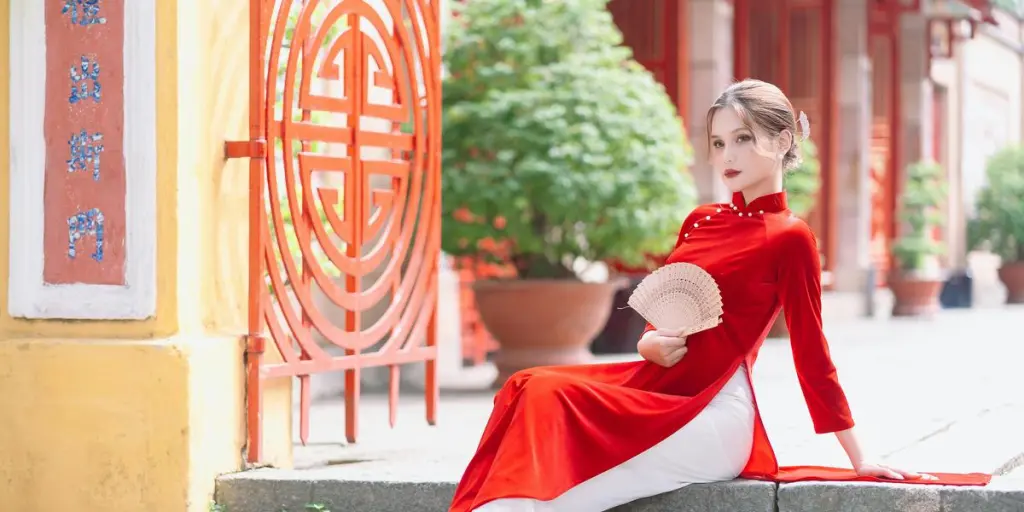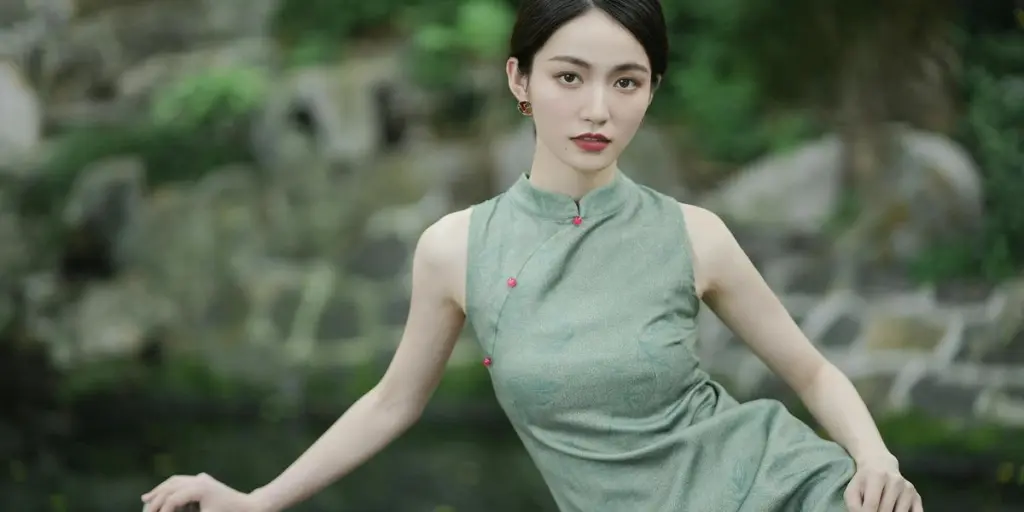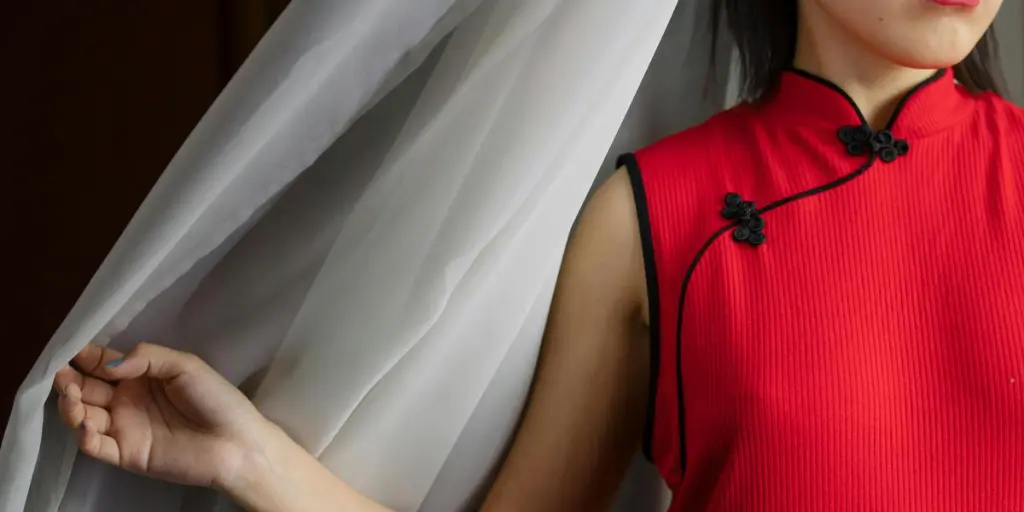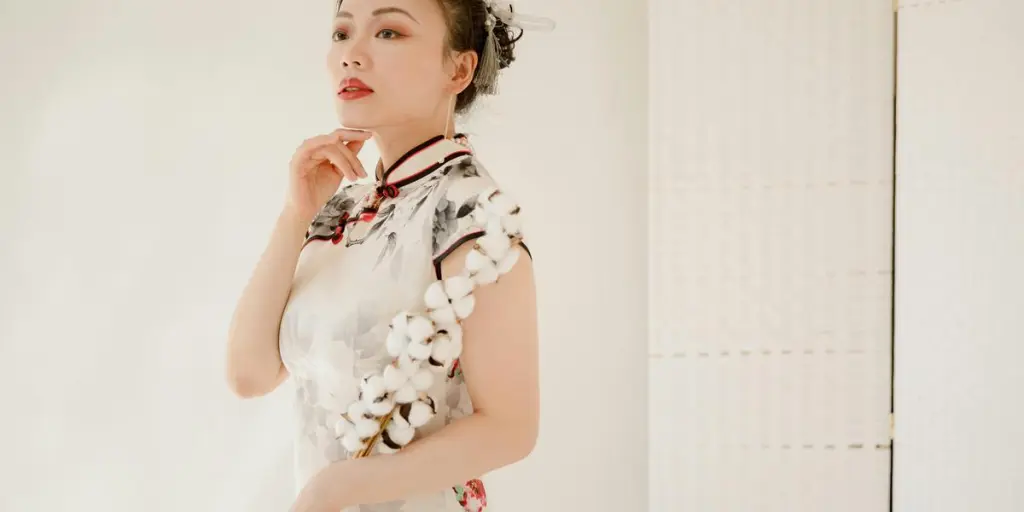The Qipao, also known as Cheongsam, is a symbol of Chinese cultural heritage that has gracefully evolved over the years. As we step into 2025, the Qipao continues to captivate the global fashion scene, blending tradition with modernity. This guide delves into the resurgence of Qipao, its market potential, and the influence of social media on its demand growth.
Table of Contents:
Understanding the Qipao: A Blend of Tradition and Modernity
The Resurgence of Qipao in Global Fashion Trends
Market Potential: Demand Growth and Social Media Influence
Exploring the Rich Variety of Qipao Designs and Cuts
Classic vs. Contemporary: A Comparative Analysis
The Influence of Cultural Heritage on Qipao Styles
Innovations in Qipao Design: What’s New in 2025
Selecting the Perfect Qipao: Materials, Fabrics, and Comfort
Popular Fabrics: Silk, Satin, and Beyond
The Role of Texture and Comfort in Qipao Selection
Seasonality: Choosing the Right Qipao for Every Occasion
Accessorizing the Qipao: Enhancing the Look with Modern Accessories
Traditional Accessories: Fans, Hairpins, and Jewelry
Modern Twists: Integrating Contemporary Accessories
Matching Footwear: From Classic Shoes to Modern Heels
Conclusion
Understanding the Qipao: A Blend of Tradition and Modernity

The Resurgence of Qipao in Global Fashion Trends
The Qipao has seen a remarkable resurgence in global fashion trends, becoming a staple in both high fashion and everyday wear. This revival can be attributed to its unique ability to blend traditional Chinese aesthetics with contemporary design elements. Fashion designers worldwide are reinterpreting the Qipao, incorporating modern fabrics, bold colors, and innovative cuts while maintaining its classic silhouette. This fusion of old and new has made the Qipao a versatile garment that appeals to a broad audience, from fashion enthusiasts to cultural aficionados.
In recent years, the Qipao has been prominently featured in international fashion shows, red carpet events, and celebrity wardrobes. Influential designers like Guo Pei have showcased Qipao-inspired collections that celebrate Chinese heritage while pushing the boundaries of modern fashion. This trend has not only elevated the Qipao’s status in the fashion industry but also sparked a renewed interest in traditional Chinese clothing.
Market Potential: Demand Growth and Social Media Influence
The market potential for Qipao is immense, driven by a growing appreciation for cultural heritage and the power of social media. Platforms like Instagram, TikTok, and Xiaohongshu have played a significant role in popularizing the Qipao among younger generations. Hashtags such as #QipaoRevival, #ModernQipao, and #CheongsamFashion have garnered millions of views, showcasing the Qipao’s versatility and timeless appeal. Fashion influencers and celebrities frequently share their Qipao looks, inspiring their followers to embrace this elegant garment. Collaborations between fashion brands and social media influencers have also contributed to the Qipao’s growing visibility and desirability
According to recent data, the demand for Qipao has seen a steady increase, particularly in regions with a significant Chinese diaspora and among fashion-forward consumers. The Qipao’s adaptability to various occasions, from formal events to casual outings, has made it a sought-after item in the global market. Additionally, the rise of e-commerce platforms has made it easier for consumers to access a wide range of Qipao designs, further boosting its popularity. As moving forward in 2025, the Qipao continues to captivate the hearts of fashion enthusiasts and cultural connoisseurs alike, blending tradition with modernity in a way that is both timeless and contemporary.
Exploring the Rich Variety of Qipao Designs and Cuts

Classic vs. Contemporary: A Comparative Analysis
Classic Qipao designs are characterized by their high necklines, fitted silhouettes, and intricate embroidery. These traditional styles often feature luxurious fabrics such as silk and satin, adorned with floral patterns and symbolic motifs that reflect Chinese cultural heritage. The classic Qipao is typically worn for formal occasions, embodying elegance and grace.
In contrast, contemporary Qipao designs have embraced a more versatile and experimental approach. Modern interpretations often incorporate diverse fabrics, including lace, chiffon, and even denim, to create a fusion of East and West. Designers have introduced innovative cuts, such as asymmetrical hemlines, open backs, and sleeveless versions, making the Qipao suitable for various occasions, from casual outings to high-fashion events. The contemporary Qipao also explores bold colors and abstract patterns, appealing to a younger, fashion-forward audience.
The Influence of Cultural Heritage on Qipao Styles
Traditional Qipao designs are deeply rooted in Chinese history, with elements that symbolize prosperity, longevity, and good fortune. For instance, the use of red and gold colors in Qipao is a nod to their auspicious significance in Chinese culture. Embroidery featuring dragons, phoenixes, and peonies are common, each carrying its own cultural connotations.
Moreover, regional variations of the Qipao reflect the diverse cultural landscape of China. The Shanghai-style Qipao, known for its sleek and sophisticated look, contrasts with the more ornate and colorful designs found in southern China. These regional influences add a rich tapestry of styles to the Qipao, making it a versatile garment that can be tailored to different cultural contexts and preferences.
Innovations in Qipao Design: What’s New in 2025
The year 2025 has seen remarkable innovations in Qipao design, driven by advancements in textile technology and a growing emphasis on sustainability. Designers are now experimenting with eco-friendly fabrics such as organic cotton, bamboo silk, and recycled polyester, aligning with the global trend towards sustainable fashion. These materials not only reduce the environmental impact but also offer new textures and finishes that enhance the aesthetic appeal of the Qipao.
Additionally, the integration of smart textiles has introduced functionalities such as temperature regulation and moisture-wicking properties, enhancing the comfort and practicality of the Qipao. Digital printing technology has also revolutionized the design process, allowing for intricate and customizable patterns that were previously impossible to achieve. These innovations have expanded the possibilities for Qipao design, making it a dynamic and evolving garment that continues to captivate fashion enthusiasts worldwide.
Selecting the Perfect Qipao: Materials, Fabrics, and Comfort

Popular Fabrics: Silk, Satin, and Beyond
When selecting the perfect Qipao, the choice of fabric is paramount. Silk remains the most popular fabric due to its luxurious feel and natural sheen. It drapes beautifully, accentuating the body’s curves while providing a comfortable fit. Satin, with its smooth and glossy surface, is another favored option, often used for evening wear and special occasions.
Beyond silk and satin, modern Qipao designs have embraced a variety of fabrics to cater to different preferences and needs. Lace adds a touch of femininity and elegance, while chiffon offers a lightweight and airy alternative for warmer climates. For a more contemporary look, designers are incorporating materials like velvet, brocade, and even denim, each bringing its own unique texture and character to the Qipao.
The Role of Texture and Comfort in Qipao Selection
Texture and comfort are critical factors in Qipao selection, especially for business buyers who need to ensure the garment meets the demands of their clientele. The texture of the fabric can significantly influence the overall look and feel of the Qipao. For instance, a smooth and glossy fabric like satin exudes sophistication, while a textured fabric like brocade adds depth and richness to the design.
Comfort is equally important, as the Qipao is often worn for extended periods during events and celebrations. Fabrics with a bit of stretch, such as silk blends or spandex-infused materials, offer greater flexibility and ease of movement. Additionally, the inner lining of the Qipao should be soft and breathable to prevent discomfort and irritation. Business buyers should prioritize fabrics that balance aesthetics with wearability, ensuring their customers enjoy both style and comfort.
Seasonality: Choosing the Right Qipao for Every Occasion
Seasonality plays a crucial role in Qipao selection, as different fabrics and designs are better suited for specific weather conditions and occasions. For spring and summer, lightweight and breathable fabrics like chiffon, organza, and linen are ideal. These materials keep the wearer cool and comfortable while maintaining an elegant appearance. Pastel colors and floral patterns are popular choices for these seasons, reflecting the vibrant and fresh atmosphere.
In contrast, autumn and winter call for warmer and more substantial fabrics such as velvet, brocade, and wool blends. These materials provide insulation and a luxurious feel, making them perfect for formal events and evening wear. Darker hues and rich jewel tones are favored during these seasons, adding a touch of sophistication and warmth to the Qipao.
Business buyers should consider the seasonal preferences of their target market and stock a variety of Qipao designs that cater to different weather conditions and occasions. This approach ensures a diverse and appealing selection that meets the needs of their customers year-round.
Accessorizing the Qipao: Enhancing the Look with Modern Accessories

Traditional Accessories: Fans, Hairpins, and Jewelry
Accessorizing the Qipao with traditional elements can enhance its cultural authenticity and elegance. Fans, often made of silk or paper, are a classic accessory that complements the Qipao’s graceful silhouette. They can be intricately decorated with embroidery or painted with traditional Chinese motifs, adding a touch of artistry to the ensemble.
Hairpins, known as “ji,” are another traditional accessory that can elevate the Qipao look. These hairpins come in various designs, from simple metal pins to elaborate pieces adorned with gemstones and pearls. They not only secure the hairstyle but also serve as a statement piece that reflects the wearer’s personal style.
Jewelry, such as jade bracelets, pearl necklaces, and gold earrings, can further enhance the Qipao’s elegance. These accessories should be chosen to complement the Qipao’s design and color, creating a harmonious and sophisticated look. Business buyers should consider offering a range of traditional accessories that allow customers to personalize their Qipao outfits and celebrate their cultural heritage.
Modern Twists: Integrating Contemporary Accessories
Incorporating contemporary accessories into the Qipao ensemble can create a unique and fashionable look that appeals to modern tastes. Statement belts, for example, can cinch the waist and add a bold touch to the Qipao’s silhouette. These belts can be made of leather, metal, or fabric, and come in various designs, from minimalist to ornate.
Modern jewelry, such as geometric earrings, layered necklaces, and chunky bracelets, can also add a contemporary flair to the Qipao. These pieces should be chosen to complement the Qipao’s design without overpowering it. Additionally, handbags and clutches in modern styles and materials can complete the look, providing both functionality and fashion.
Business buyers should stay attuned to current accessory trends and offer a curated selection that allows customers to experiment with different styles. This approach ensures that the Qipao remains relevant and appealing to a diverse audience.
Matching Footwear: From Classic Shoes to Modern Heels
Footwear is an essential component of the Qipao ensemble, and the right pair of shoes can enhance the overall look. Traditional Chinese shoes, such as embroidered slippers and silk flats, are classic choices that complement the Qipao’s elegance. These shoes often feature intricate embroidery and delicate designs that reflect Chinese cultural motifs.
For a more modern twist, high heels and stilettos can add height and sophistication to the Qipao. These shoes come in various styles and colors, allowing for a personalized and fashionable look. Business buyers should consider offering a range of footwear options that cater to different preferences and occasions, ensuring that customers can find the perfect pair to match their Qipao.
Conclusion
In conclusion, selecting the ideal Qipao involves a careful consideration of design, materials, comfort, and accessories. Business buyers should prioritize high-quality fabrics and innovative designs that cater to diverse customer preferences. By offering a range of traditional and contemporary styles, as well as complementary accessories, businesses can ensure that their Qipao selection meets the needs of their clientele and stands out in the competitive market.




